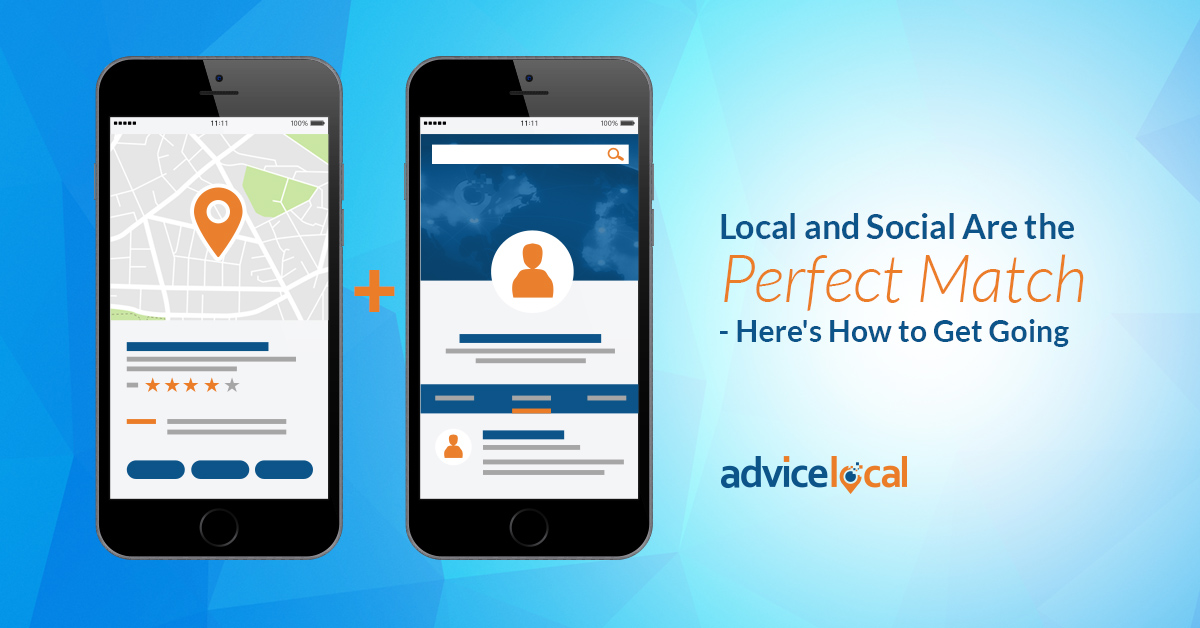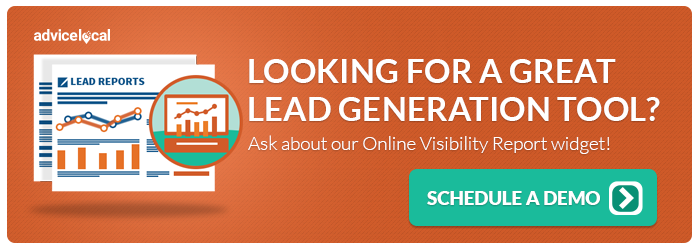Things are not what they were years ago. Hey, things are not even what they were a year ago! Life is currently so fast-paced that a year feels like only a couple of months. And this year, in 2019, ignoring social media is a definite no-no for any business, local or otherwise. Social media simply cannot be ignored. There are more than 3 billion active users right now! This isn’t the first time I have expressed the importance of local and social.
I know – you’re wondering why the #QueenofLocalSEO is talking to you about social media. Did you know that social media platforms build trust among consumers and search engines alike? Trust means improved placement in search results, and more customers visiting local brick-and-mortar businesses. All of this provides the opportunity for more positive reviews. Together, these help local businesses and brands expand their local digital footprint, which is my area of expertise and my passion. But now that I have digressed, let’s get back to our topic.
Most businesses have taken the first few steps on social media by creating their social accounts and posting some updates hoping to engage prospective customers – but that is not enough, particularly for local businesses that are wanting to drive website and foot traffic to their locations.
With brands and businesses continually fighting for users’ attention, the social media world presents fierce challenges for anyone who ventures into it. Both local businesses and businesses nationwide are feeling the social pressure that we all love to hate. Want to kick a local business’ social media presence into a higher gear? Then keep reading….
Setting Up Local and Social for Success
All great strategies start with goals and objectives, and it’s no different with social media. The first goal should be to rapidly grow a targeted following, and to do this, a business needs to be in tune with Facebook’s current algorithm.
Keep in mind that the things that matter the most to Facebook these days are interactions – from shares, to comments, to likes and engagement with a post shared by a friend. In order to grow their following, a business’ Facebook content needs to be good enough that people will interact with it in any way.
So, once a business has a growing following, it’s time for the next set of goals. And depending on the business’ strategy, those goals could be to:
- Grow an engaged audience
- Increase brand recognition
- Get more sales
- Gain new leads
- Improve ROI
- Streamline customer service
- Increase physical store visits
Local businesses are usually interested in getting more sales, gaining new leads and increasing visits to their location, but social media is also a great tool for customer service. Keeping customers coming back by offering impeccable service online and off is a win/win for every local business.
Taking advantage of tools like Facebook’s Chatbot is a way of doing this. A chatbot can help a local business offer outstanding customer service, even after-hours, by replying with a tailor-made response to people inquiring about the business.
Measuring Just Makes Sense
But how can you know if something worked if you don’t have practices in place to measure? In this phase, the business needs to determine what tools they will use to measure their success and put them in place.
Facebook, Instagram, Twitter and other platforms already offer their own analytics, which can be used to test the performance of a specific post or campaign and make changes as needed. Other comprehensive analytics platforms include Sprout Social, Buffer and Hootsuite. All of these are great tools to review performance, and also to schedule and manage different social media platforms at the same time.
It’s important to keep in mind that social media doesn’t mean a sale or store visit will be instantly achieved. Social media campaigns will not immediately translate to more sales and visits to brick-and-mortar locations. There’s a variety of ways to measure social media success. Analytics will assist in seeing if social media activity is translating into leads and sales. For other factors – brand recognition, for example – surveys and social listening tools are great assets.
Be Picky When Picking Platforms
A good strategy for local businesses is to focus predominantly on the platforms that their targeted audience frequents. For example, a campaign on Snapchat would not perform well if a business is looking to sell products to Gen X-ers.
Additionally, content should always be tailored to the social media platform, and for the audience. For example, videos are a great way to engage with an audience on Facebook, but taking advantage of Stories might be better for Instagram. Focusing exclusively on a few platforms can help maximize the business’ efforts, translating to exponential growth.
However, choosing the core platforms is not an easy task. Businesses and brands need to consider many things – starting with the age range of their targeted audience. According to Statista, Facebook has over 5.8 million users between the ages of 24 and 35 just in the United States! This is great for businesses looking into using the social network to get brand recognition and conversions.
Businesses may also want to look into Instagram, Twitter and Pinterest, depending on their brand, product and ultimate goals.
- Instagram boasts 500 million monthly active users, with ages 18–29 encompassing 55 percent of people in the United States using it.
- Of its 317 million monthly users, 79 percent of users are located outside of the United States.
- Women comprise 81 percent of Pinterest’s 100 million active users.
Each social media platform has a very specific and generational audience, it seems.
Local-Focused Social Media Campaigns Require Engagement
There are several things a brand can do to get an engaging group of followers on social media. Long gone are the days when few businesses advertised on platforms like Facebook. It is indeed much harder to catch the attention of a business’ target audience, so you just have to get creative.
Here are a few examples you must put into practice.
1. Consider a Contest
Social contests are a simple way to reach a larger audience organically. Encouraging people to share and invite their friends to participate for extra entries is a great way to host a social contest. It’s important to make the contest rules clear, and follow all of the social media platform’s rules for holding contests. The biggest factor here is that the prize the business is giving away must exceed the effort required to enter/win.
A complication to consider with these types of social contests is making the prize relevant to the business. For example, giving away an iPad Pro will attract a lot of attention, but you will also get a bunch of entries that are just from people wanting the iPad. They could have no interest in the business’ products or services.
For instance, a good prize for a local presence management solution such as mine may be giving away a year’s worth of listing management and reputation management services. This type of prize could attract an audience that would be interested both in our services and in updates from around the local search industry.
For a plumbing company like bluefrog Plumbing + Drain, another good example might include the company hosting a social contest where the winner would receive a drain cleanout for free. This would also generate leads for the business to market their services to.
2. Give Paid Social Advertising a Try
Advertising on the various ad platforms will help a business get their content seen first, especially by those who have been searching for a related product. Growing an audience organically is not what it used to be. Throwing a little money at the problem is necessary – but be careful with budgets!
Brands still need to produce great content, even if it’s not regularly seen by everyone using a specific social media platform. It’s a waste of time and money to pay to promote content that is not of the highest quality. Knowing this, help a new audience fall in love with the brands you represent.
3. Go! Go! With Live Video
Instead of being cuckoo for Cocoa Puffs, people are cuckoo for video – especially live video. Video is something every business needs in their marketing arsenal, no matter the size.
- It’s been reported that 80 percent of users would rather watch live video from a brand than read a blog, while 82 percent prefer live video to social posts.
- 360-degree videos are all the rage, too. Magnifyre did a study and determined that the same video gets 28.81 percent more viewers when published in 360-degree format.
- Video is also great for websites. With around 55 percent of users spending less than 15 seconds on a page, conversions can get a spike with homepage videos.
According to TalkPoint, “78 percent of online audiences are already watching video on Facebook Live.” The demand for video will only increase in 2018 and beyond.
4. Influencer Outreach
Influencing the influencers is a must. With so many businesses vying for their attention, the business needs a compelling offer and some budget to put behind it. Partnering with a relevant, local influencer could really help boost a local business’ social media reach.
Ford has an interesting influencer program. One of their campaigns that comes to mind is the Ford Airstream Campaign running on social media last summer. For those of you in Texas, you may have noticed people vacationing with a Ford Airstream at different campgrounds. This is an influencer campaign in action.
Brands have to be careful when selecting influencers to partner with, as many influencers have been blacklisted by influencer marketing agencies for having fake followers. When choosing an influencer, always focus on the engagement the influencer receives, not just on a large number of followers.
Social Media Can Be a Powerful Local Business Marketing Platform
When used effectively, social media platforms can be very useful for brands, particularly for local businesses looking to increase brand awareness and convert more sales. With the brutal competition going on in the online world right now, simply creating accounts and posting occasional content won’t be enough.
A serious social plan can bring about fast growth, leading to high levels of engagement, increased numbers of leads, and greater sales. Ultimately, a business needs a strong social presence, so it makes sense to work on a strategy built for engagement and growth.
If you’re not sure where to get started with building a business’ local presence, request a demo – we have the solution!




